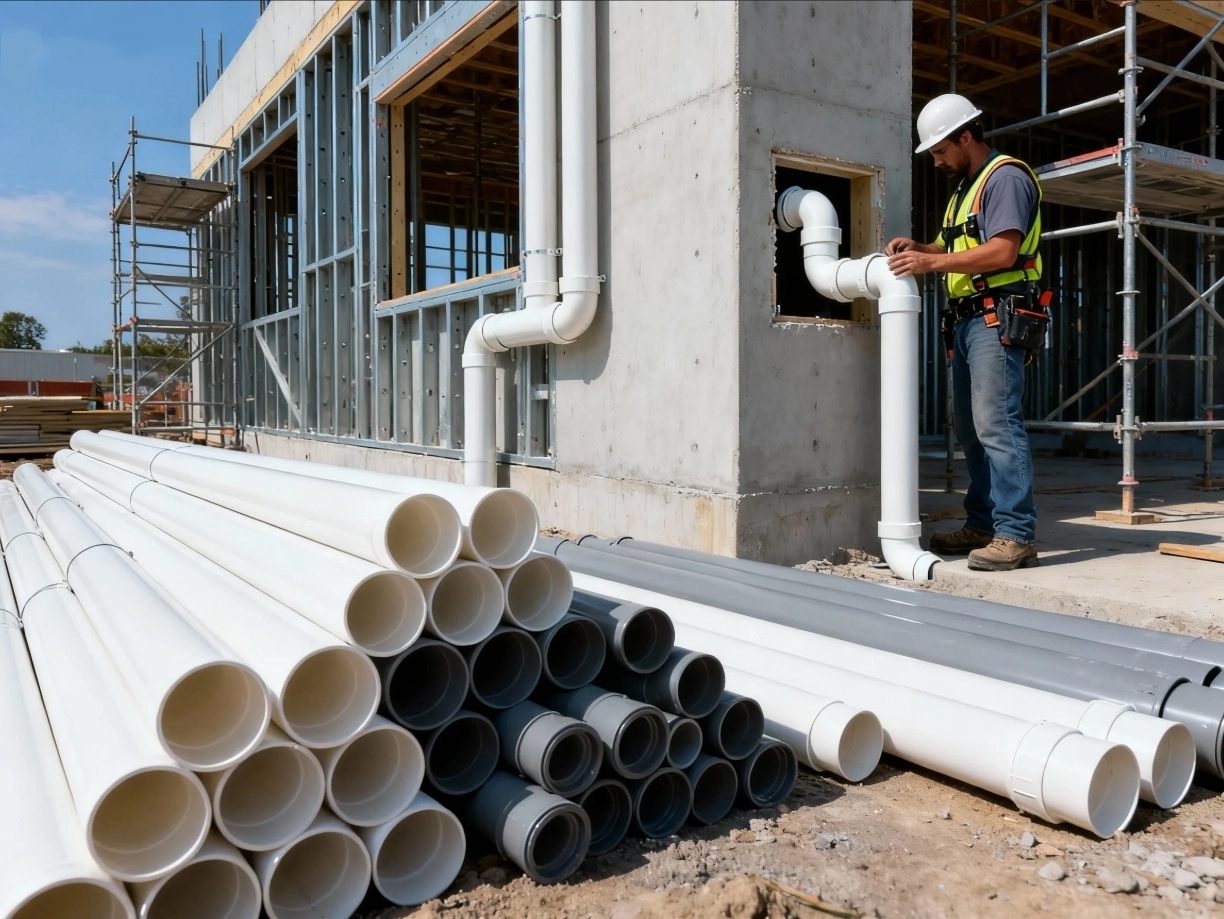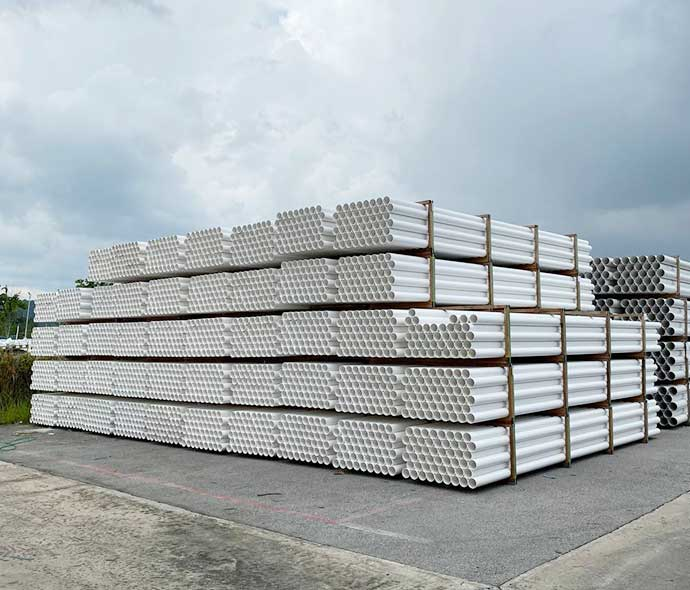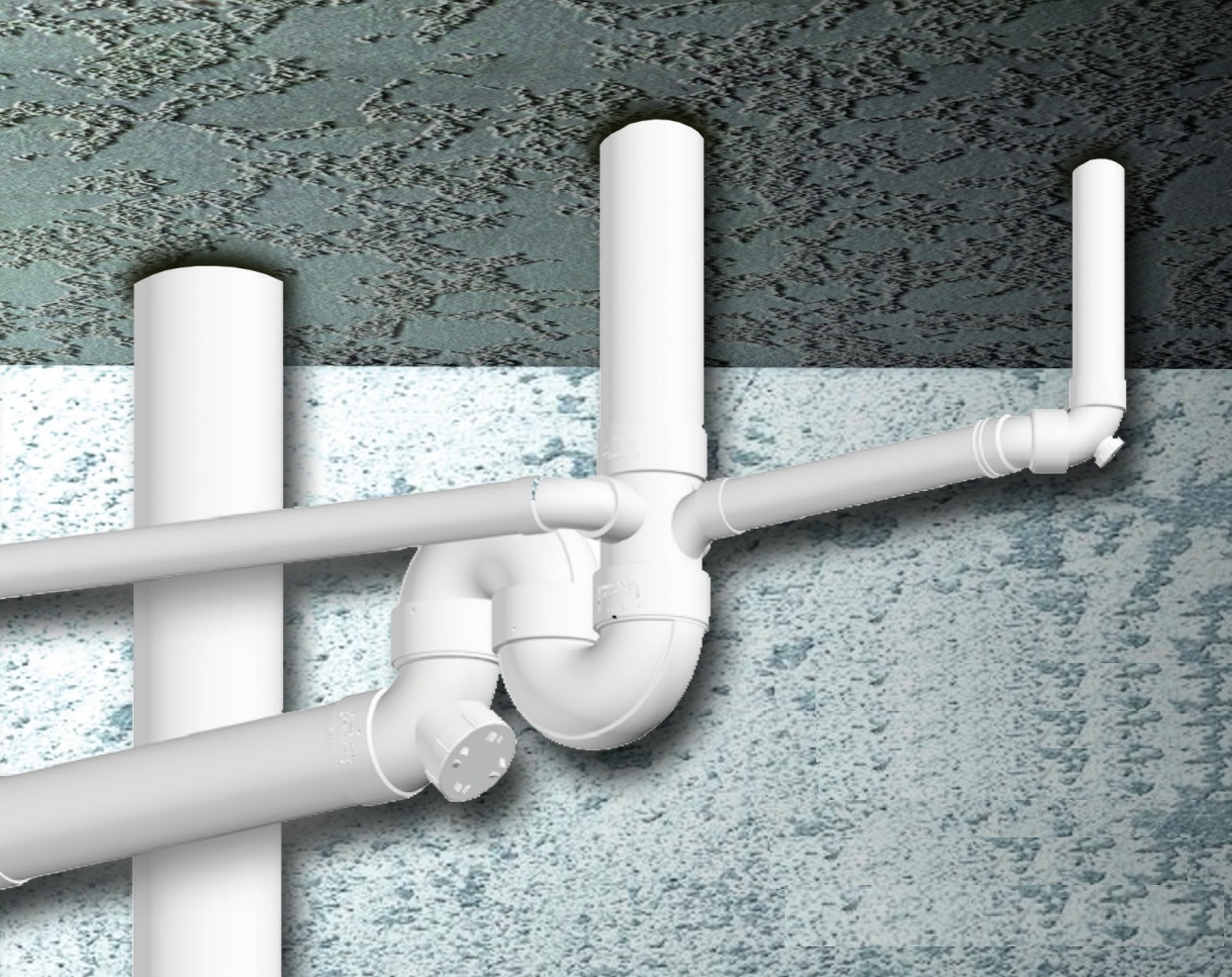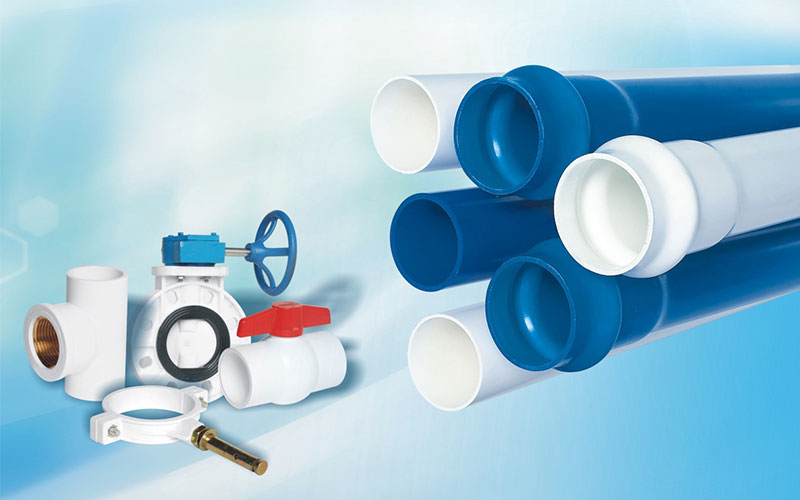Building pipes form a very vital part of residential and commercial structures. They bring in the proper supply of water and out the efficient removal of wastewater, hygiene, and structural integrity, respectively. Pipes serve different functions. There are drainage pipes for rainwater and wastewater removal, sewer pipes for sewage conveyance, and plumbing water pipes for potable water delivery. Understanding these types is crucial for effective building design and maintenance.

Different types of building pipes serve distinct but equally important functions within a building's plumbing system. Here is a breakdown:
These drainage pipes are designed to remove water or other liquids from a specific area, including stormwater and groundwater. Water accumulation can lead to structural damage, dampness, and mold growth. Therefore, proper rainwater drainage is essential to prevent water accumulation around the building’s foundation.

Sewer pipes convey waste and dirty water from sinks and any other plumbed-in facilities to either a septic tank or a public sewer. Because of their function, these pipes need to be very tough, completely blockage-free, and sealed so as not to leak. Indeed, sewer pipe replacement can be quite an involved job, stressing the need for first-class quality and proper installation in the first place.

These pipes aim to bring clean, drinkable water from the city supply or a well to faucets, showers, and machines throughout the building. The stuff used to make plumbing water pipes needs to be safe, not rust, and keep the water clean. They also need to handle the pressure of the water supply. An underground pipe might be used for the main water supply line leading to the building.

Selecting the appropriate building pipe for your project involves the following key factors:
- Durability: The pipes should be capable of withstanding the operational pressures, environmental conditions and the fluid they carry.
- Materials: Various materials are available, including PVC, HDPE, and PEX. The choice depends on the application and your budget.
- Cost: Both the initial cost and long-term maintenance expense of the pipes and fittings should be considered in the decision.
- Installation: Some light materials like PVC and HDPE are easier and quicker to install, greatly reducing labor time and costs.
- Local Climate: Different climates also influence the pipes’ choice. For example, In areas prone to freezing temperatures, pipes need to be protected or made of materials that can withstand freezing.
- Water Quality: Hard water or water with high acidity can corrode certain pipe materials more quickly, influencing the selection of plumbing water pipes.
- Building Type: The demands on the plumbing system differ between a single-family home and a large commercial complex. High-rise buildings, for instance, require pipes that can handle higher pressures.
Proper installation is critical to pipe performance:
- Incorrect Pipe Sizing: Using pipes that are too small can lead to low water pressure or slow drainage, while oversized pipes can be unnecessarily expensive.
- Improper Jointing: Poorly connected joints are a primary cause of leaks. Ensure connections are made according to manufacturer specifications for the specific pipe material.
- Ignoring Local Codes: Building codes dictate acceptable pipe materials, installation methods, and inspection requirements. Failure to comply can lead to costly rework.
- Inadequate Support: Pipes, especially horizontal runs, need proper support to prevent sagging and stress on joints.
- Too Shallow: If the slope is not steep enough (e.g., less than 1/4 inch per foot for many residential applications), wastewater will flow too slowly. This allows solids to settle and cause clogs in the sewer pipe.
- Too Steep: Conversely, if the slope is too aggressive, liquid waste can flow too quickly, leaving solid waste behind, which also leads to blockages.
- Optimal Slope: Generally, a slope of 1/4 inch of fall per foot of horizontal run is recommended for most residential underground drainage pipes and sewer pipes up to 3 inches in diameter. For larger pipes, a slope of 1/8 inch per foot may be adequate. Always consult local plumbing codes for specific requirements. Using a level during installation is crucial to achieve the correct slope. This is especially critical for any underground pipe to ensure effective flow.
After installation, don’t forget to maintain it regularly to avoid making a big mess.
Regular maintenance helps prevent issues like clogs, leaks, and corrosion. Tips include:
- Periodic inspection and cleaning of drainage pipes and sewer lines.
- Monitoring for signs of wear, such as discoloration, reduced flow, or foul odors.
- Promptly addressing leaks or blockages to avoid structural damage.
- Frequent Clogs or Slow Drains: This can indicate a buildup of sediment, grease, or tree root intrusion in sewer pipes or drainage pipes.
- Discolored Water: Rusty or brown water can indicate corrosion within the pipes.
- Foul Odors: Persistent sewer gas odors may signal a crack or break in a sewer pipe or a problem with the venting system.
For reliable building pipe solutions, consider products from LESSO Malaysia. We provide a comprehensive range of products, covering drainage pipes, sewer pipes, and plumbing water pipes. In addition to building pipes, we also offer pipes and fittings for infrastructure, industry, and agriculture. Explore our pipe solutions right now!